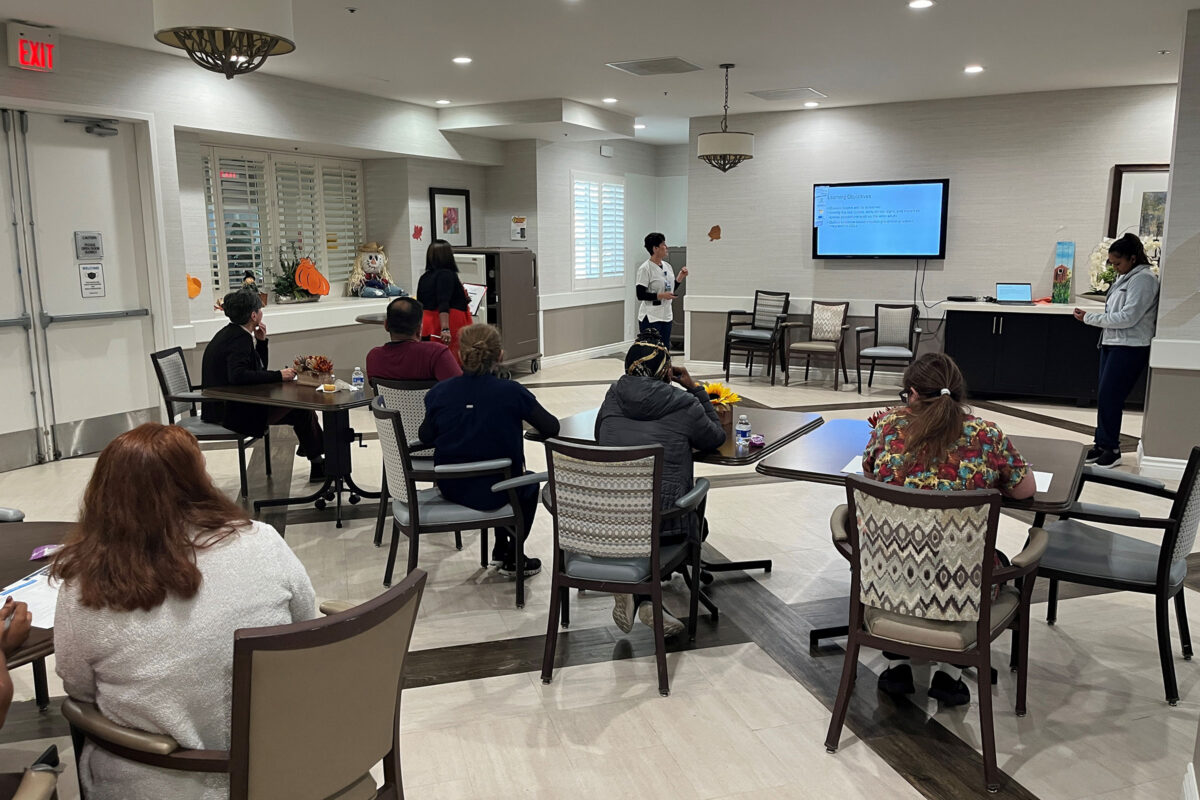Sepsis continues to be a one of the primary reasons of hospital readmissions from Skilled Nursing (SNF) facilities. Internal data shows that sepsis, predominantly resulting from Urinary Tract Infections (UTI), is the main cause of sepsis related admissions/readmissions from SNF to the Sacramento ED. As one of the measures to address this concern, the hospital collaborated with a SNF to create an educational initiative aimed at training SNF staff on sepsis prevention, early identification and escalation. Clinical nurses Mary Boardman, BSN, RN, CEN (ED) and Ace Delo Santos, BSN, RN, MEDSURG-BC (5th Floor); and Operating Room Assistant Nurse Manager Jennice Singh, MSN, RN, CNOR volunteered their time in developing the materials, teaching, and facilitated the breakout sessions.
Certified Nursing Assistants (CNAs), who have the most frequent contact with residents, were taught on how to use the STOP AND WATCH acronym to recognize early infection indicators and relay concerns to the on-duty nurse. The program also highlighted how evidence-based care practices that are already part of the resident’s activities of daily living (ADLs), including oral hygiene, skincare, and bladder care, are important in preventing pneumonia, wound infections, and UTIs. Lidija Bilkic, RN, Infection Preventionist at Grammercy Court, noted, “This training empowers CNAs to deliver proactive care to our residents as they are the primary caregivers and best positioned to observe changes in resident conditions.”
During the breakout session, the SNF nurses examined Systemic Inflammatory Response Syndrome (SIRS) criteria, analyzed case studies, and demonstrated the Situation-Background-Assessment-Recommendation (SBAR) framework for escalating changes in patient conditions. The sessions also stressed the significance of early detection and reporting of any alterations in a resident’s health status. The staff were urged to report to the nurse on duty even minor changes that might appear inconsequential for further assessment and monitoring. The interactive nature of the training allowed participants to apply the SBAR framework in case scenarios, boosting their communication abilities and assurance in escalating concerns.
The educational sessions were attended by over 50 SNF staff members. One CNA remarked, “I appreciated the class and interactive components. The games are fun and engaging. I learned information that I can use in my work. I also like the badge buddy as a reference so I can recall the STOP AND WATCH acronym for assessing changes in resident’s condition.”
The collaboration between hospital and skilled nursing facility (SNF) nurses highlights the importance of partnerships in improving community health and reducing preventable hospital readmissions. By combining expertise, sharing resources, and networking, institutions can strengthen their capacities in addressing health conditions such as sepsis, and promoting common goals to improve patient outcomes.
